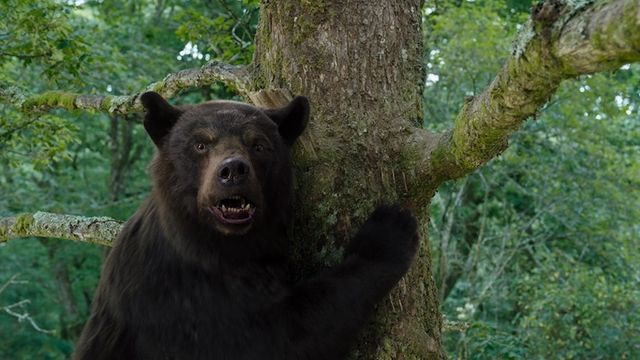“Cocaine Bear” is a high-concept comedy that supplies an unbeatable cinematic experience. The comedy’s premise comes from a true story involving blow, a bear and drug smugglers. In 1985, a former narcotics officer turned notorious drug smuggler, Andrew Thornton, planned to transport over 300 kilograms of cocaine to the United States. Everything was going smoothly until he tapped into a radio signal used by federal agents. In a state of panic, Thornton threw out half of the cocaine load as he flew over Georgia. The coke packages landed in the center of a Georgia forest occupied by black bears. One unlucky bear believed the cocaine was a food dish. The bear was said to have consumed up to 40 lbs of the narcotic, causing it to die in minutes. The cocaine bear fascinated the senses of American pop culture leading to books, exhibits and now movies.
The original 80’s story was radically changed for the screenplay as it had the black bear go on a coke-fueled killing spree. Hollywood’s adaptation of the idea comes from a spec script by Jimmy Warden with the screenplay being tossed from studio to studio; until the academy award-winning producers Phill Lord and Chris Miller brought the project to Universal Pictures. The studio fell in love with the absurd movie idea, and production started immediately. Elizabeth Banks was brought on board to direct the picture. Primarily known for her acting expertise, she brings an understanding of the movie-making process to the director’s chair.
Bank’s extensive skills allow her to direct an ensemble cast of reputable actors successfully. The expansive cast is anchored in by Kerri Russell, Isiah Whitlock Jr. and the late Ray Liotta. Each actor represents different storylines converging at National Park, where Cocaine Bear wreaks havoc. Comedic actress Margo Martindale is a standout in my book. I’ve never seen her on the big screen, but she has been in countless movies. Her line delivery gifts have a sense of charm. Whitlock provides a needed layer of comedy that adds to the zaniest of the story. Finally, Ray Liotta gives a memorable last performance as an aging gangster. Liotta was easily one of the greatest actors in American cinema, with films like “Goodfellas” and “Field of Dreams” under his belt. Banks dedicated her movie to the memory of the beloved actor.
A 1985 setting allows “Cocaine Bear” to have a nostalgic style. The eccentric cast of characters wears leg warmers, headbands and parachute pants. 80s fashion is used by Banks to fully immerse audience members into the period. She also uses the radical catalog of early 80s songs. A chase between the coked-out bear and an ambulance filled with paramedics ends up in a blood bath as “Just Can’t Get Enough” by Depeche Mode gives the gory scene a lighter tone. Depeche Mode’s classic tune complements the synthesized score of Mark Mothersburg. His score has nostalgic music cues that came from his DEVO days. Mothersburg’s totally tubular score is a perfect backdrop for this horror comedy.
The titular star of the film is a gift that keeps on giving. The bear is the central point of suspense, action and comedy. Suspenseful stress builds up before each kill. The insanely violent scenes are filled with over-the-top action moments. Bank’s energetic camera movement allows the action scenes to flow smoothly on the silver screen. Most of the comedy stems from the coke-induced escapades of the great black bear giving the audience a sense of empathy toward the creature. The bear could’ve been portrayed as a scary monster. Instead, Banks shows the animal as a friendly giant that never meant to ingest the cocaine.
“Cocaine Bear” is a cult classic in the making. Some people will not enjoy this movie because it is very unrealistic. Nevertheless, the long distance from the confines of reality enhances the film’s scope. The movie is an excellent mix of graphic violence, nostalgic flare and outlandish comedy. Banks successfully crafts a good time at the movies.
Verdict: “Cocaine Bear” takes advantage of its bombastic premise and delivers a camp film to be recognized for many generations to come.








